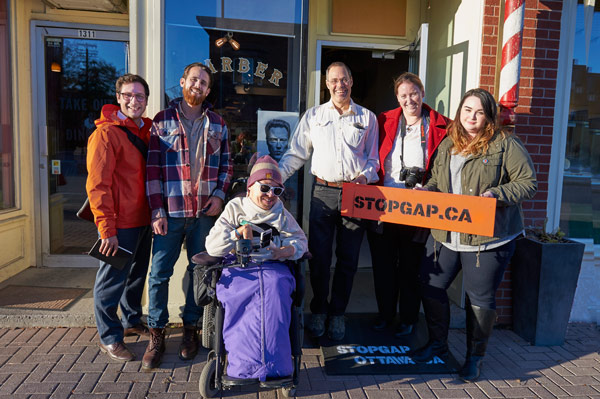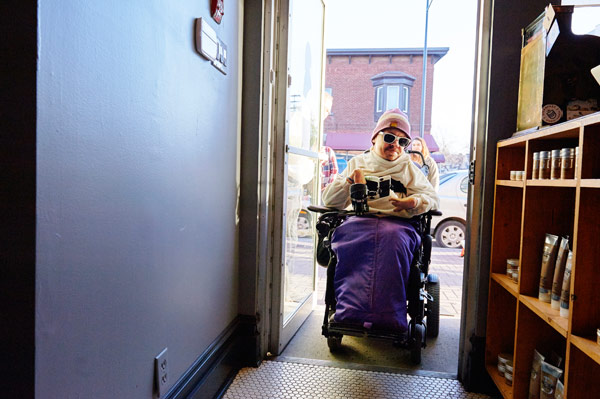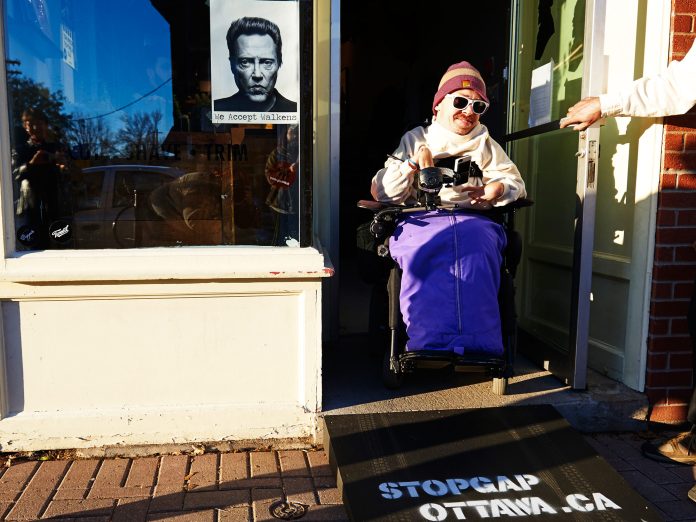By Joseph Hutt –
While permanent accessibility fixtures can be costly to small businesses and bylaws difficult to navigate, there is a local organization providing a solution for businesses throughout Ottawa.
On November 4, Stop Gap Ottawa, as part of their campaign to promote accessibility, made its first delivery of accessibility ramps to a dozen businesses along Wellington Street West.


While these ramps are considered a temporary fix for businesses, it is the goal of Jessica Lahrkamp, the founder of Stop Gap Ottawa, to see Ottawa become fully ramped by 2025, the year the Accessibility for Ontarians with Disabilities Act comes into effect. Daunting as it may seem, they are already seeing the kind of support that can make this a reality.
The Wellington West BIA has been a tireless champion for their cause. “It’s not just about folks in [wheel]chairs,” explains Zach Dayler, Executive Director of the Wellington West BIA. “Think about mothers; think about boomers; think about everyone who needs help just bridging that gap temporarily.”
“I don’t think there are a lot of other areas in the community that have done this yet,” says James Bridges, Office Coordinator of the BIA.
“Where once there was an impediment for disabled people, here’s something we can do to make lives instantly better,” states Bridges, encouraged by the progress he has seen. “As the BIA, we’ll have to use our network to let people know that we are working to make Wellington West more accessible.”
In fact, the BIA has already been instrumental in building the collaborative effort that now surrounds Stop Gap Ottawa, with many of these volunteers coming together during a BIA accessibility workshop that was held in March.
This includes Claude Haridge, who has taken on the manufacturing side and assembled most of the Stop Gap ramps. The workshop also brought on one of Stop Gap Ottawa’s driving force collaborators: Chris Binkowski, accessibility advocate and founder of Accessibility for Humanity.
“Chris and I did an audit of the neighbourhood,” explains Dayler. “We traveled the whole strip and he was able to spot the places that were more of a problem.”
The BIA also brought the Ottawa Tool Library (OTL) into the picture.
According to Lahrkamp, the OTL has been a great help. “They actually gave us tools for one of the most recent ramps we’ve built… and we plan to do some workshops with them and build from there.”
This is a relationship that Lahrkamp is doing her best to nurture, as the OTL could prove a valuable resource in many ways.
“We’re trying to get [construction] organized through the Ottawa Tool Library,” says Haridge, whose workshop is in Stittsville. “It will be more accessible for volunteers, and there’s a lot of the tools right there.”
The beauty of this project is that Stop Gap is also working to provide a means for people to help themselves as well.
“We’re always happy to help people when they want to just do it and don’t have time to wait for us,” says Lahrkamp. With this in mind, Stop Gap is developing handbooks and instructional videos, starring Haridge himself, to teach people how to build these simple but sturdy accessibility ramps.
With the amount of community support they’ve already received, Stop Gap Ottawa seems to be in the perfect position to move forward.
“It’s awesome!” says Phil Ireland, manager at the House of Barons. “As the neighbourhood barber shop, it’s important that anybody can come to us. Having this [ramp] just adds to the amount of people who can come in.”
For more information about the Stop Gap Foundation, visit them online at stopgapblog.blogspot.ca. You can also connect with the local branch at facebook.com/StopGapOttawa.
